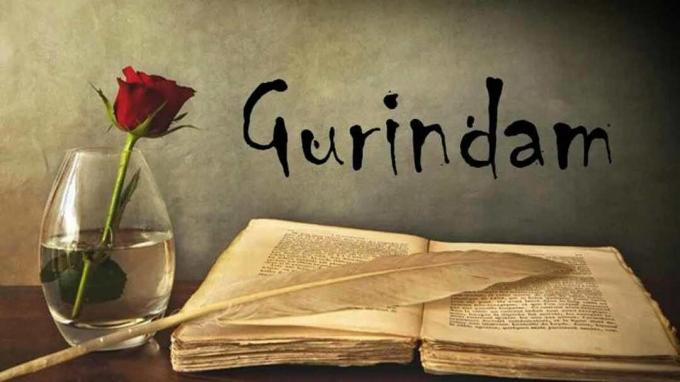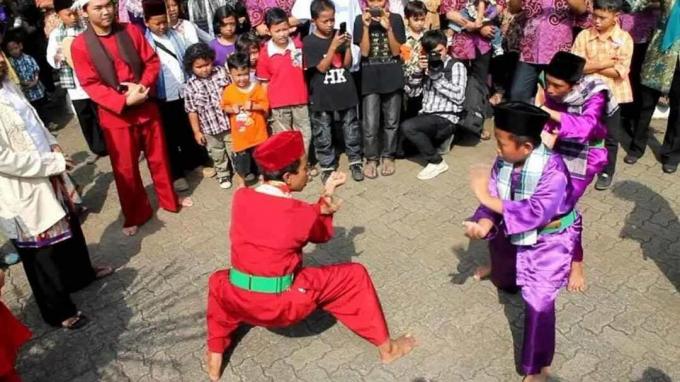15 Folk Poetry Texts: Definition, Types & Examples
Poetry is a literary work in which there are several types of stanzas and lines. By using beautiful words taken from a theme discussed by the author of the poem. And one example of such poetry is the text of folk poetry.
The words of the folk poetry text have a strong meaning. Folk poetry texts also have feelings and emotions that the author wants to convey to a folk poetry text.
Table of contents
Definition of Folk Poetry Text
Understanding the text of folk poetry is folk literature that is certain in terms of its form.
In general, folk poetry consists of several series of sentences, some of which are based on their short length syllables, there are those based on spells, weak voice pressure, or also based solely on rhythm.
The types of folk poetry are in the form of traditional statements, traditional expressions, and the categories are wawangsalan and paparikan.
Then the paparikan are divided into two, namely folk beliefs in the form of mantras and folklore assembly.
Folk poetry has values that develop in people's lives.
It also includes folk poetry, namely old poetry that contains values and messages from the ancestral heritage of the Indonesian nation.
Types of Folk Poetry
The types of folk poetry include pantun, gurindam, poetry or also folk poetry that has developed in a certain area.
In television shows usually making rhymes have become a mainstay which aims to be funny, and rhymes are also sometimes found in songs.
Meanwhile, poetry, gurindam and old literature are now rarely heard.
In the world of literature, there is a hereditary heritage in the form of folklore or poetry people who are not known who the author is because the story or poem has been around for a long time time.
Because old poetry is passed down from generation to generation and the author is not known, usually old poetry is conveyed by word of mouth.
Old poetry usually looks rigid because it is bound by rules such as the number of lines and the number of words, repetition of words and also the number of lines in each stanza can be at the beginning or at the end of the rhyme or what is called with rhyme.
1. Gurindam

Gurindam is an old poem from India. The term gurindam comes from the Indian language, namely kirindam which means "beginning" or "simile".
Gurindam is full of morals and religious values, therefore for the ancients gurindam is very important to be the norm in life.
Gurindam is one of the old or Malay poetry which is very important as the nation's cultural heritage.
Characteristics of Gurindam
- There are two lines in one stanza.
- Each line has a word count of about 10-14 words.
- Each line has a rhyme or rhyme A-A, B-B, C-C and so on.
- It is a unified whole.
- The first line contains problems, questions, or agreements.
- The second line contains the answers as a result of the problem or agreement contained in the first line. The purpose or content of the gurindam is in the second line.
- The contents of the gurindam usually contain advice, aphorisms or it could be about the philosophy of life.
Example of Gurindam
1. Whoever seeks knowledge
Then look to the teachers
2. When you are studying
You have to be diligent and patient
3. Whoever is not knowledgeable
It's like a chair that doesn't rest
4. Don't just memorize knowledge
But it must also be practiced
5. If you don't know
Then you have to seek knowledge
2. Pantun

Pantun is an old poem that is entrenched and rooted in society, pantun has many names in various languages in this nation.
Pantun (toba language), watch language (tagalog), tuntun (Javanese) which have more or less the same meaning. That is something that educates direction, orderly speech and forms of politeness.
Pantun has spread throughout the archipelago, the function of the rhyme in each region is the same, namely in the Malay, Javanese, Sundanese, and other areas, which is to educate as well as to entertain.
Through rhymes we can entertain others with games.
The language sound of the rhyme is insinuating or reprimanding others.
That something is not good when it is done indirectly or can be called by giving advice.
This does not mean that the person who conveys the rhyme is not firm when he says something.
But it is through rhymes that someone has their own style in expressing a message or a piece of advice.
Through the rhyme, the ancestors will seem more polite in advising or reprimanding others.
That is, indirectly, it aims to make people who are given advice not feel cornered and embarrassed.
The characteristics of the poem can be seen in its form. These characteristics should not be changed because when the rhyme is changed it will turn into gurindam, seloka or other forms of old poetry.
Characteristics of Pantun
- Each stanza consists of four lines.
- Each line consists of 8-12 syllables.
- The first and second rows are sampiran.
- The third and fourth lines are the contents.
- The rhyme of each ending is a-b-a-b.
Examples of Poems
1. Travel to Paris
Many houses lined up
Let it die at the end of the keri
As long as you get a sweet dinda
2. If taro has been planted
Don't ask for taro anymore
If the mind has been planted
Don't ask for reply anymore
3. The kite is stuck on the nail
The nail is stuck to the clothesline
Your love is sincere only for me
But honey, my mom doesn't agree
4. Really dangerous venomous snake
when bitten will coma
I'm really happy
when we are together
5. Areca pods planted tightly
The quail is now running
It's the same thing we respect the custom
Pillows of culture in the heart
3. Poetry

The poem is one of the old poetry, the poem comes from the Persian country which was brought into this country along with the entry of Islam into Indonesia.
The term or word of poetry comes from an Arab country, namely syi'ir or syu'ur which means "feeling". who realizes", then the word syu'ur develops into syi'ru which has the meaning of poetry in knowledge general.
In its development, poetry underwent modifications and changes, therefore it became typical of Malay, and no longer referred to poetic literature from Arab countries.
In this case, those who play a major role in forming Malay typical poetry are poets, all like Hamzah Fansuri with his works such as: Boat Poems, Trade Poems, Pingai Bird Poems, and Session Poems poor.
Characteristics of Poetry
Poetry has characteristics that distinguish it from other old poetry texts, namely:
- Each stanza consists of 4 lines.
- Each line consists of 8-14 syllables.
- Poetry rhyming a-a-a-a.
- Within each line is the content.
- The language used is usually figurative language.
Example of Poetry
1. Don't worry about trials
Don't be sad because of difficulties
Just pray to God
God willing, he will accept it
2. You don't need to sow love
This will only hurt
If in the end we're not together
Not like our promise at the time
3. Go to school straighten your intentions
Determined to seek knowledge
There is no loss in learning every time
So that your future is good
4. Even though you're big
Don't speak harshly
Be patient person
So that the neighbors don't get angry
5. Maybe this is how love should be
Winding road side by side
Must be remembered forever
Maybe it's forever
A few explanations about the text of folk poetry that we have discussed in full and also examples, hopefully increase knowledge and increase knowledge that is useful for all of us.
